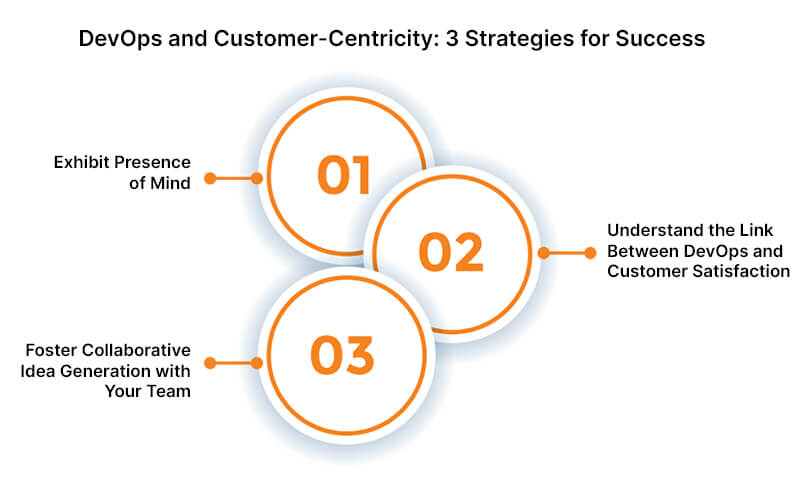It’s a common expectation that the C-suite prioritizes strategy and execution while closely monitoring stakeholder value and financial resources.
Reason for the Communication Gap
On the other hand, DevOps leaders tend to prioritize the frequency and speed of software delivery. As a result, they may use technical jargon to describe their work, leading to a communication gap with executives who may need a technical background.
To overcome this communication gap, it’s crucial to establish shared objectives. Value stream management (VSM) bridges the C-suite, Agile, and DevOps teams, helping them align their goals toward improving the customer experience.
What is Value Stream Management?
VSM is a collection of methods to optimize team performance to ensure exceptional customer experience.
It centers on two key factors to achieve this objective:
- Evaluating Speed &
- Evaluating Ease
Implementing changes from the customer’s perspective & ensuring that customers can realize the value of those changes.
How is Value Stream Management different from value realization?
VSM optimizes team performance to deliver exceptional customer experience by emphasizing the speed and ease of changes and ensuring customers realize their value. At the same time, value realization refers to an enterprise’s ability to acknowledge that they have achieved the desired outcomes from their investment.
For instance, a company invests in a new software tool to streamline its sales processes. Value realization would occur when they can measure and demonstrate a significant improvement in their sales productivity and revenue generation.
If the company can make more than its invested amount, then value realization has occurred.
Now let’s head to understand:
How DevOps Leaders Can Effectively Communicate Technical Concepts to C-suite Decision Makers
Before we head first into getting leaders to make a decision, let’s learn some key points you should consider.
1. Face Struggle to Buy-In
DevOps teams may struggle to gain buy-in and budgetary support from the C-Suite if they cannot demonstrate how their work aligns with the company’s goals and objectives.
2. Consider it a Cost-Centre
When the C-suite needs to comprehend the benefits of DevOps for customers fully, they may perceive it solely as a cost center, undermining its potential to generate profits.
However, If you’re looking to hire DevOps Azure developers as a strategic partners for your business, we can help you.
3. Define Success in Customer-Centric Outcomes
To gain the support of the C-suite and maximize the benefits of DevOps, it’s critical to focus on customer outcomes as a measure of success.
3 Tips to Help DevOps leaders achieve Customer-Centric Outcomes

1. Exhibit Presence of Mind
DevOps leaders need to stay attuned to the needs of executive stakeholders and adjust their communication style as needed. Avoid technical jargon and be mindful of delivery metrics that may not resonate with executives.
- Did any major incidents occur during production?
- What was the downtime, and how long did it take to restore service?
- What was the team’s performance in delivering features or story points? How frequently were changes deployed, and what was the team’s velocity?
DevOps leaders need to effectively communicate their value by shifting from technical output discussions to outcome-oriented conversations that link to business performance and customer experience, such as:
- Changes in customer behavior and interaction with the digital product over time.
- The story is conveyed through social media feedback, reviews, and word-of-mouth recommendations.
- The team’s ability to promptly respond to new customer requests.
- Customer journey conversions and their impact on revenue generation.
2. Understand the Link Between DevOps and Customer Satisfaction
To determine where DevOps can deliver value to customers and the company, take inventory. Identify the organization’s primary objectives and initiatives, and then examine the work that your teams have accomplished or are currently engaged in that aligns with those goals.
Next, communicate the impact of software delivery using language consistent with those objectives. For instance, highlight how product improvements have enhanced the customer experience, boosted retention rates, generated positive reviews and referrals, reduced customer journey time, and improved revenue and competitiveness.
VSM tools offer immediate access to necessary data, facilitating comprehension of a digital product’s cycle time, such as how rapidly one can respond to customer requirements. Moreover, these tools illustrate how the team’s output originated from a customer request and led to a measurable improvement in customer experience.
Engage with your team to consider the following inquiries:
- Do the company’s websites, apps, and APIs provide a user-friendly, secure, and satisfying experience that encourages customers to return?
- Are your products equipped with innovative software that sets you apart from your competitors and attracts customers to buy from you?
- In what other ways do software developers contribute positively to the organization?
- Is the organization saving money by eliminating unnecessary usage of resources, time, and finances?
- Can you eliminate bottlenecks and accelerate product release by implementing an agile process?
Additionally, it’s beneficial to examine the practices of your competitors, such as whether they are utilizing software development teams to gain customers and increase their market share. Gathering data related to customers, costs, revenue, and market share can provide valuable talking points and statistics, equipping you with research to bring to C-Suite conversations that tend to center around these metrics.
3. Foster Collaborative Idea Generation with Your Team
Encourage your innovative teams to think outside the box and consider value stream improvements aligned with corporate goals and initiatives. Consider improvements to products, processes, costs, revenue, and staffing. Ask your team thought-provoking questions that align with the C-suite’s perspective, such as:
- How can your team develop new products or improvements that will provide exceptional customer experiences?
- Are any inefficiencies or wastes in the production process hinder the company’s ability to create innovative products?
- How can you propose solutions to enhance product quality?
- What untapped opportunities exist currently?
- Are there any discrepancies between the company’s actions and statements contributing to systemic issues?
For instance, if a company claims to have enterprise agility, but in reality, it operates in a highly matrixed environment with obstacles created by siloed personnel, processes, and timelines.
In Conclusion
Without the support of the C-Suite, an organization may benefit from the potential benefits of implementing DevOps. A unified approach can be easily achieved when influential executives are on board with the shift. However, implementing DevOps can be challenging and requires effective communication to convey the bigger picture. Therefore, it is important to analyze and account for individual roles, teams, and departments in any proposal to ensure that the DevOps mindset becomes a necessary culture shift that provides clear benefits to all stakeholders involved in the management chain.
We’re hoping these tips will come in handy to help you convince and tackle queries posed by members of the C-Suite.
How Can Netsmartz Help You?
At Netsmartz, we offer DevOps consulting services that aid in expediting application development through effective methodologies. Our approach aims to enhance communication and cooperation between development and operational teams by reducing the gap. By leveraging our DevOps infrastructure management, we can revolutionize your team’s work, leading to quicker application deliveries.
We help you overcome the roadblocks to implementing DevOps. Read through to get a deeper understanding of how we do so.
To ensure the success of a DevOps culture, the quality of the people who implement it is crucial. If you want to explore a fresh perspective on attracting top-performing DevOps professionals, contact us at Netsmartz.
Summary
Kickstart Your Project With Us!
Popular Posts
CONTACT US
Let's Build Your Agile Team.
Experience Netsmartz for 40 hours - No Cost, No Obligation.
Connect With Us Today!
Please fill out the form or send us an email to







